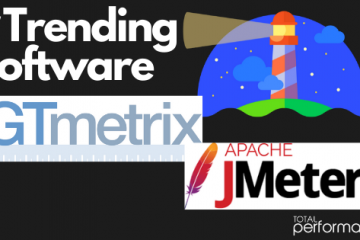Holiday Readiness No-Nos


Is your IT infrastructure ready for the holidays? It might seem a bit early in the year to think about it, but preparing for the rush will mitigate potential problems during the holidays and prepare your business for any other deluge throughout the year, whether expected or unexpected.
While seasonal traffic might predominantly be an issue for the retail industry, holidays can also significantly affect B2B eCommerce, as many departments are attempting to use up their yearly budgets.
To complicate matters further, global issues can influence holiday activity and spending. As markets adjust to unprecedented changes in the worldwide economy related to COVID-19, there’s no telling what kinds of curveballs your business might be thrown. Even if your holiday preparations worked like gangbusters in 2020 and 2021, each year brings extreme changes that you must consider.
And if the holidays are typically a quiet time for your business, you still need to prepare for other high-traffic periods during the year that can potentially stretch your resources to the breaking point.
So how can ensure your infrastructure survives holiday stress? Let’s start with avoiding the following scalability pitfalls:
Planning performance testing just for the expected load
No matter how many projections you run about what business will look like during the holidays, you will be wrong. Okay, maybe you manage a fairly accurate assessment of how things will look based on past data, but there will always be unexpected challenges.
Maybe it’s staff shortages, a promotion you have running that’s more popular than expected, or market conditions that inspire a spike in consumer activity.
If you only prepare your systems for the expected load, you could be inviting disaster. During the holidays, simple external factors can have a compounding effect on your systems. Unexpected traffic can overwhelm your technology and personnel, which inevitably results in lost business.
Conducting effective performance testing in the retail industry involves planning for the expected load plus a bit extra to accommodate soak testing to detect performance-related issues, and then factoring in the additional load possible from an unexpected spike.
Relying on existing infrastructure
One of the most important holiday tech considerations is infrastructure. Unless you stay overprovisioned year-round, you can’t rely on existing infrastructure to sustain holiday traffic.
While this applies to retail companies that host infrastructure on-premises using a traditional server model or a private cloud, most retail organizations require the flexible capacity offered by public cloud computing platforms.
To successfully handle holiday traffic on your systems, your infrastructure review should include:
- Assurance of resources from your cloud partners. Don’t assume they’ll be available, especially when other companies might be vying for those same resources.
- Review of triggers and alerts for infrastructure monitoring. Make sure that you can anticipate potential problems before they adversely impact sales.
- Review of caching policies for both CDN and application caching. Make sure that your customer experience on your sites is as good as it can be while simultaneously mitigating unnecessary traffic.
- Disk space review on servers, especially databases. The holidays are not the time to think about what data you can purge.
- Ensure failovers are working before they fail. Murphy’s Law will always strike during the busiest time of year for your business.
- Test your load balancer to ensure it does not become a single point of failure. The last thing you want to worry about is a chain reaction of server failures due to overload. As requests can bottleneck on load balancers, it is also a good idea to have backup load balancers in case the primary fails.
Adhering to an inflexible change control process
Another pitfall for companies during the holidays is keeping to their usual change control process. This can result in the usual changes being deployed during critical and high-risk times of the year. The holidays aren’t business as usual, and your change control process and criteria have to reflect that.
Review your change control process to ensure all changes are subject to a higher level of scrutiny and impact analysis. For organizations, a change freeze during any high-traffic period might be a good idea.

Failing to prepare contingency and fallback plans
No matter how well you prepare, there can always be issues that arise unexpectedly.
Contingency and fallback plans are necessary in case the worst happens.
Extensive modeling of worst-case scenarios is necessary, and you will need as much information as you can gather on what parts of your technology portfolio are interconnected and dependent on each other to predict potential snags. Companies often encounter a cascade of problems because they didn’t have insight into what would happen to Asset X if Asset A were to go down.
An effective fallback plan should include:
- Toggle switching for individual features when required. This is helpful when systems are under stress from all sides. In such a scenario, you can provide breather to the systems by toggling some features based on business needs and risk to the overall system. This is an area where you have to know what other functions will be affected before making decisions. Chaos engineering has an important role in understanding the interdependencies..
- Implement an incident response plan that includes customer support, war rooms, on-call personnel, and decision-making authority for each day/shift. This needs to take the form of a workflow in which specific events trigger specific remediation.
Siloing IT and Marketing
This is by far one of the riskiest mistakes when the holidays are imminent. If technology and marketing are not in sync, a very successful marketing strategy can become your worst nightmare from the technical systems side, resulting in a major catastrophe for the whole company.
Successful marketing campaigns are extremely time-sensitive, especially when they are competing with other vendors in the aggressive holiday market. Making a big promotional push when company servers are unstable can spell disaster for online conversion rates.
The marketing department needs to be informed of technology initiatives, and IT needs to know about marketing activities that might affect infrastructure.
The importance of effective testing
The only way to maintain a technology portfolio that is both reliable under normal conditions and resilient against catastrophic events is by first understanding how each piece of technology affects the entire business. Once you identify your software interdependencies, you’re better equipped to test each element of your infrastructure to see how it responds to stress.
And while periods leading up to the holidays warrant special scrutiny of your infrastructure, continuous testing throughout the year can help you stay ahead of small changes that can cause big problems. Use the insight gained during the busy season to build a more resilient infrastructure. Iterate on ways you can get better use out of your existing technology portfolio, figure out how to fill the gaps that already exist, and learn to more accurately predict obstacles to the business you want to build.






0 Comments